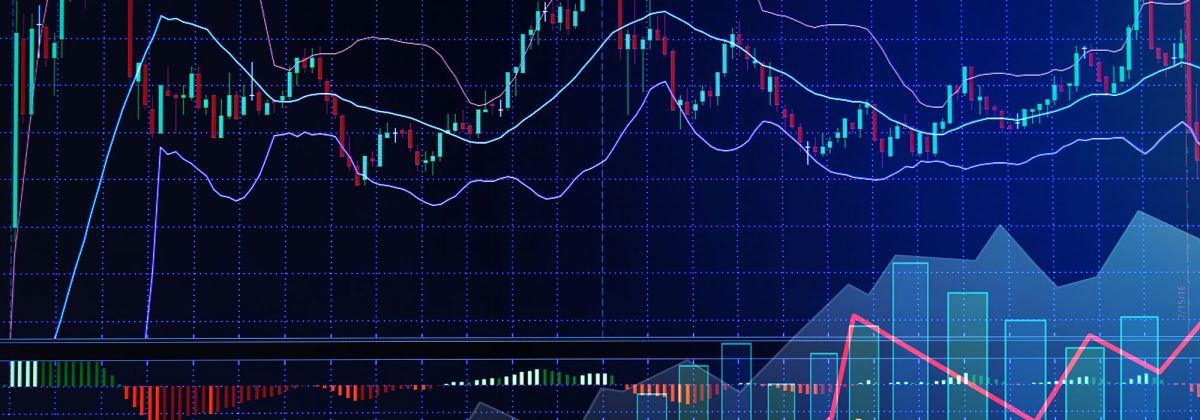What are Some Frequently Used Forex Chart Patterns?

Charts are an effective tool widely used in the forex industry. Chart patterns provide access to large amounts of information and reflect the happenings of a specific long or short-term period. There are many different chart patterns out there, but here are some of the most commonly used by professional and experienced traders.
Triangle Pattern
The triangle pattern includes two trendlines, which are either descending or ascending. This pattern occurs when prices narrow down between highs and lows to a much tighter price area.
On the basis of their construction and relative importance for trading, they can be classified into three main types.
1. Symmetrical Triangle
The symmetrical triangle pattern is considered a continuation pattern. It indicates a period of consolidation within a specific trend, followed by a continuation of the previous trend. The pattern is formed by the convergence of an ascending support line and a descending resistance line.
The trendlines in a symmetrical triangle consist of a slope that converges at a point. This is generally known as the apex point. The price of the currency tends to fluctuate between the two trendlines and the apex. A breakout usually occurs in the same direction as that of the ongoing trend. This is a characteristic property of the symmetrical triangle pattern in the forex market.
In case there has been a downward trend before, you can concentrate on a break that is below the ascending support line. Conversely, if there has been an upward trend, you should probably look for a break that lies above the descending resistance line. Keep in mind that the symmetrical chart pattern is not always an indication of a continuation of the previous trend. A break in the opposite direction of the earlier trend can signal the formation of a new trend.
2. Ascending Triangle
The ascending triangle is a bullish pattern that gives an indication that the price could go to a higher level after the triangle is formed. Two main trendlines that make up this pattern are the point of support, which is an ascending trendline, and the point of resistance, which is a flat trendline. The price moves between these two until it finally breaks out on the upside. Before this chart pattern gets formed, there is usually an upward trend, which makes it a continuation pattern. Apart from this, it can also be formed just after a downward trend.
3. Descending Triangle
This chart pattern is the exact opposite of the ascending triangle and conveys a bearish sentiment. It indicates that the price is expected to fall after pattern accomplishment. In the context of trendlines, it is almost identical to the ascending triangle.
Rising and Falling Wedge Patterns
Rising wedge patterns on the chart indicate the possibility of an upcoming downtrend. This pattern is defined by a rising wedge shape or a consolidation, after which the price breaks further downwards. A chart with a rising wedge pattern consists of higher levels of highs and lows, until the point when consolidation cannot continue. Also, there is no impact on the original price action after the pattern.
A falling wedge pattern is quite similar to the rising wedge, but here the consolidation in prices is generally followed by an upward breakthrough. The consolidation period has lower lows and highs, post which the prices break in an upward direction.
Double Tops and Bottoms
Double tops are formed in the event of an uptrend, when a pair is unable to go past the top on two different instances.
This pattern consists of two peaks, which indicate a decrease in buyer interest and the possibility of a downtrend. When you see a double top on a chart, there is a chance that the price might reverse downwards.
Double bottoms are the same as double tops, except that instead of their inability to breakthrough a high, the price is unable to breakthrough a new low. This chart pattern gives an indication that the price could reverse upwards.
Head and Shoulders Pattern
As its names suggests, this pattern resembles a head with two shoulders, and indicates a trend reversal from bullish to bearish.
The left shoulder pattern is formed after the end of a move during which the volume has been quite high. After the peak of this left shoulder pattern has been formed, there is a noticeable reaction and the prices move downwards by a specific degree, which normally happens on low volume.
The increase in prices forms the head, which has heavy volume and then the reaction downward is associated with relatively lesser volume.
When the prices move upwards again, the right shoulder is formed. The volume in the head part of the chart is greater than that in the left and right shoulder. Additionally, a neckline is drawn across the base of the left shoulder, head and right shoulder. A major confirmation of the head and shoulders pattern is when the prices break through the neckline and continues falling after the formation of the right shoulder.
Engulfing Pattern
This pattern indicates good trading opportunities due to a number of features. Firstly, it can be spotted very easily, and the price action shows a strong and quick change in direction. During an uptrend, the down candle completely engulfs the previous up candle, which is known as bearish engulfing. In the case of a downtrend, the up candle completely engulfs the previous down candle, which is known as bullish engulfing.
This pattern can prove to be highly tradable, since the price action shows a strong reversal, with the previous candle being completely reversed.
All these patterns can help gauge price changes, but over-reliance on any single chart pattern could be damaging. So, it is best to use them along with technical analysis tools.




